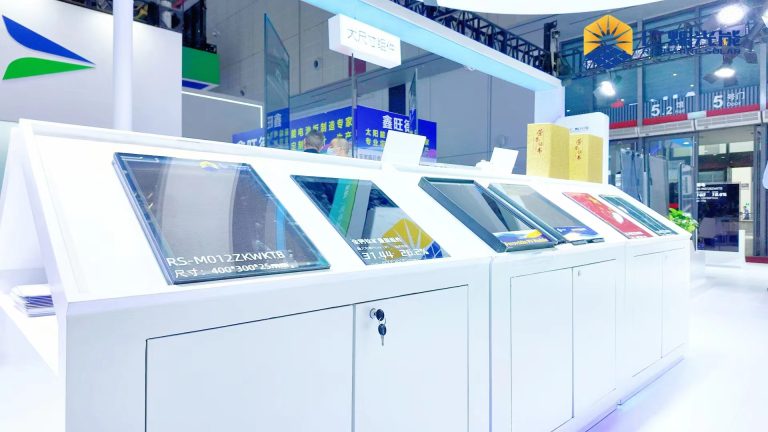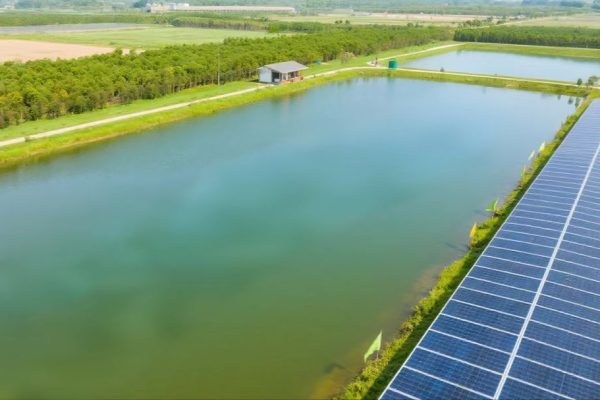What Installers and Exporters Need to Know About This Promising but Early-Stage Technology
In the fast-evolving world of solar technology, perovskite solar cells (PSC) have attracted enormous attention. Promising higher efficiency, flexible form factors, and lower production costs, this new class of photovoltaic materials is widely considered a future disruptor in the PV market.
But for system integrators, distributors, and exporters, especially in the commercial or off-grid international market, the key question remains:
Is perovskite solar ready for commercial export and integration?
In this article, we break down the current state of perovskite PV, the technical and commercial challenges, and what professionals in the global solar + storage space should watch for.
🧪 What Are Perovskite Solar Cells?
Perovskites refer to a family of materials with a crystal structure similar to the mineral calcium titanate (CaTiO₃). In solar technology, it typically involves organic-inorganic hybrid lead halides that are used as the light-absorbing layer.
Why They Matter:
| Advantage | Explanation |
|---|---|
| High Efficiency | Lab-tested single-junction cells reach >25.7%, tandem cells exceed 30% |
| Low Cost Potential | Printable films, low-temperature processing |
| Lightweight and Flexible | Can be used on curved or mobile surfaces |
| Customizable Appearance | Semitransparent or colored modules possible |
📉 Why Perovskite Panels Aren’t Mainstream Yet
Despite their promise, perovskite PV still faces several critical barriers before commercial export or wide adoption:
1. Stability Issues
Perovskite materials degrade rapidly under moisture, heat, and UV exposure. Long-term field performance (20–25 years) remains unproven.
2. Toxicity Concerns
Most high-efficiency perovskites contain lead (Pb), raising environmental and regulatory issues, especially in the EU and U.S.
🔍 Lead-free perovskites exist but show much lower efficiency.
3. Manufacturing Scale
As of mid-2025, only a handful of Chinese companies (e.g., Microquanta, GCL, Renshine) have moved beyond pilot-scale production. Gigawatt-level manufacturing is still years away.
4. No Standardized Testing or Certification
Unlike silicon modules, there is no mature IEC certification framework for perovskite panels in real field conditions. Without these, large-scale export and project financing remain risky.
🌍 Global Status: R&D vs. Commercial Reality
| Region | Status |
|---|---|
| China | Leading in pilot lines and early production. Several Tier 1 players (LONGi, Jinko) are experimenting, not yet shipping perovskite modules. |
| Europe | Focused on tandem (Si+perovskite) R&D. Commercial modules not yet available. |
| USA | DOE-backed projects, academic focus. Commercial viability expected post-2026. |
| MENA, SEA, Africa | Not yet viable due to lack of product access and environmental durability concerns. |
🔄 Key Trend: Tandem Cells – Perovskite + Silicon
Most near-term commercialization is happening in tandem architectures, where perovskite is layered over conventional silicon cells. This allows:
- Higher efficiency (>30%)
- Compatibility with existing silicon module lines
- Easier path to certification
🏭 China’s Huasun and GCL are reportedly developing tandem perovskite modules for rooftop and BIPV (building-integrated) applications. Exports expected in limited volumes 2025–2026.
🤔 Should Exporters and EPCs Consider Perovskite?
✅ Suitable If:
- You are working on demo projects, pilot rooftops, or design competitions
- You have direct access to Tier 1 Chinese R&D partners
- The system is non-critical, low voltage, or experimental (e.g., portable solar)
❌ Not Suitable If:
- You are deploying bankable, long-lifetime solar in off-grid rural or industrial zones
- Your customer demands warranty-backed, 25-year certified modules
- You cannot provide on-site maintenance or regular cleaning (humidity = killer)
📦 Export Status (as of 2025)
| Company | Technology | Export Capability |
|---|---|---|
| Microquanta | Roll-to-roll, flexible perovskite | Small pilot exports to EU |
| GCL Perovskite | Tandem R&D | Not yet commercial |
| Renshine Solar | Single-junction perovskite | Demo-level only |
| Saule Technologies (Poland) | Flexible panels | Low-power IoT only |
| Oxford PV (UK) | Si-Perovskite Tandem | Not commercially shipped yet |
🔧 What Can Integrators and Installers Do Now?
While waiting for perovskite panels to mature, you can:
- 🧠 Stay updated via reliable R&D reports (e.g., NREL, Fraunhofer, Chinese journals)
- 🤝 Build relations with Tier 1 Chinese manufacturers, who may offer early-access demo panels
- 🔋 Focus on mature technologies like TOPCon, HJT, or bifacial PERC for current projects
- 🗣 Educate your customers — “perovskite is coming, but not today”
🧭 Looking Ahead: When Will Perovskite Be Ready?
| Stage | Timeline |
|---|---|
| Lab and pilot modules | ✅ Already happening |
| Rooftop demo projects | 2025–2026 |
| Small-scale BIPV exports | 2026–2027 |
| Certified mass-production | 2027–2028 |
| Utility-scale integration | Post-2028 |
A Technology to Watch, Not to Deploy — Yet
Perovskite solar panels are incredibly promising — they may well define the third generation of PV technology after mono-Si and thin film. But for now, they remain in transition between lab and market.
As an EPC, system integrator, or exporter, your best strategy is:
- Stay ahead of the trend
- Educate your team and clients
- Build supply relationships early
- Wait for proven, certifiable, and scalable products before integration









